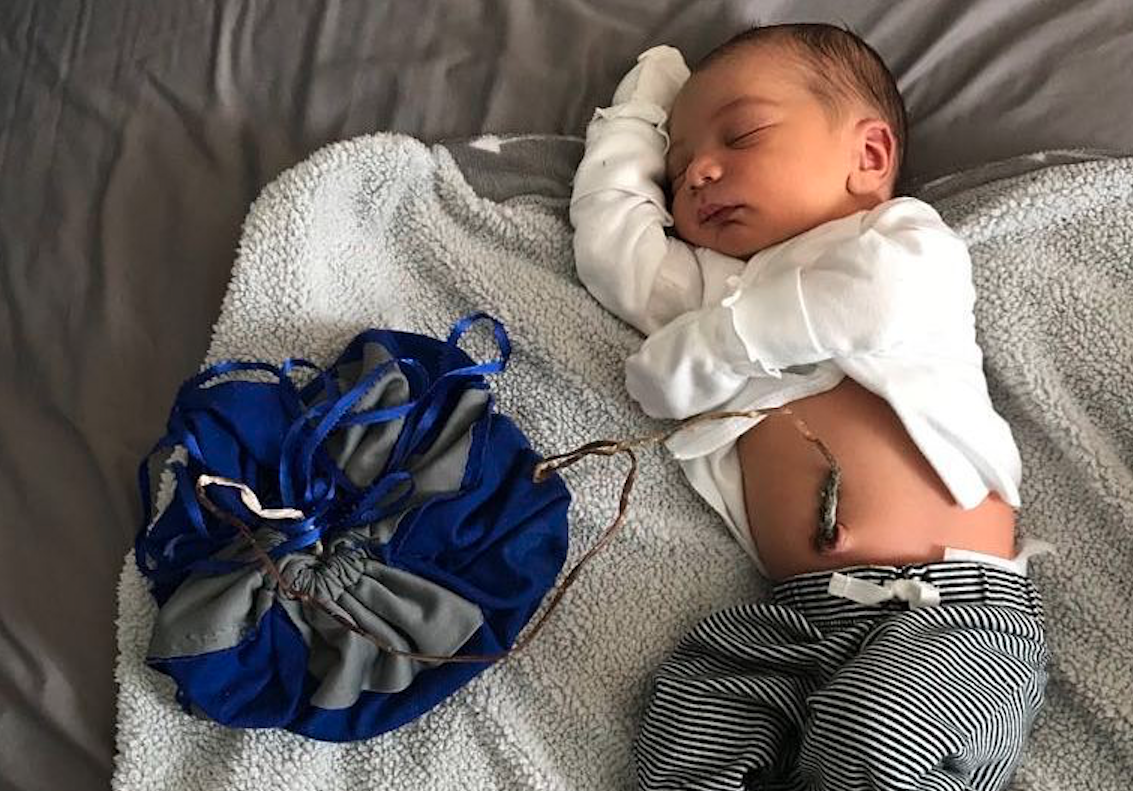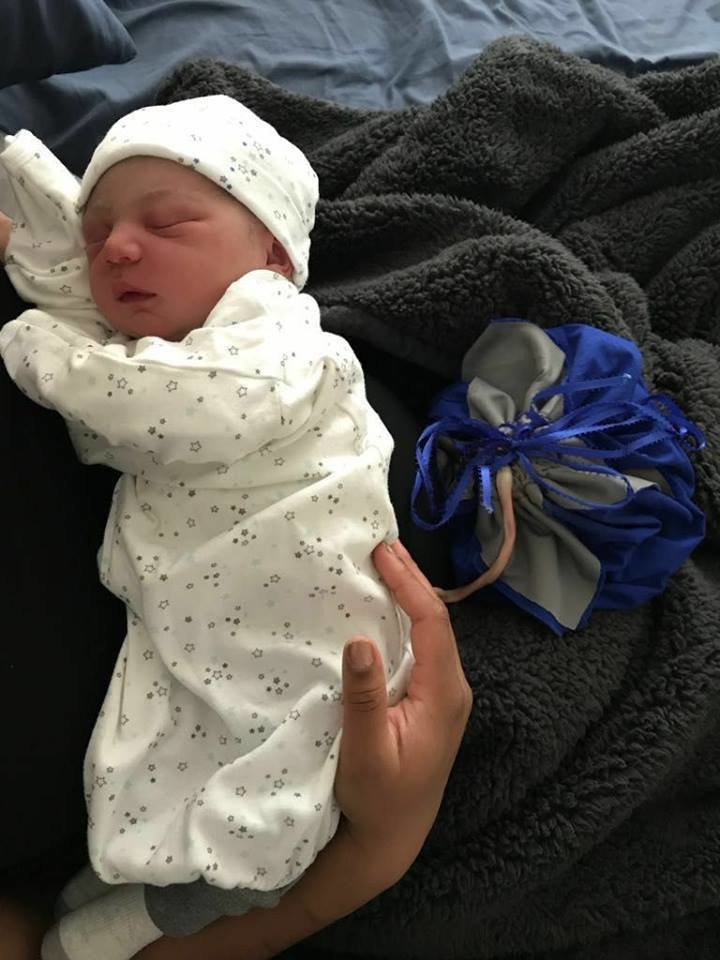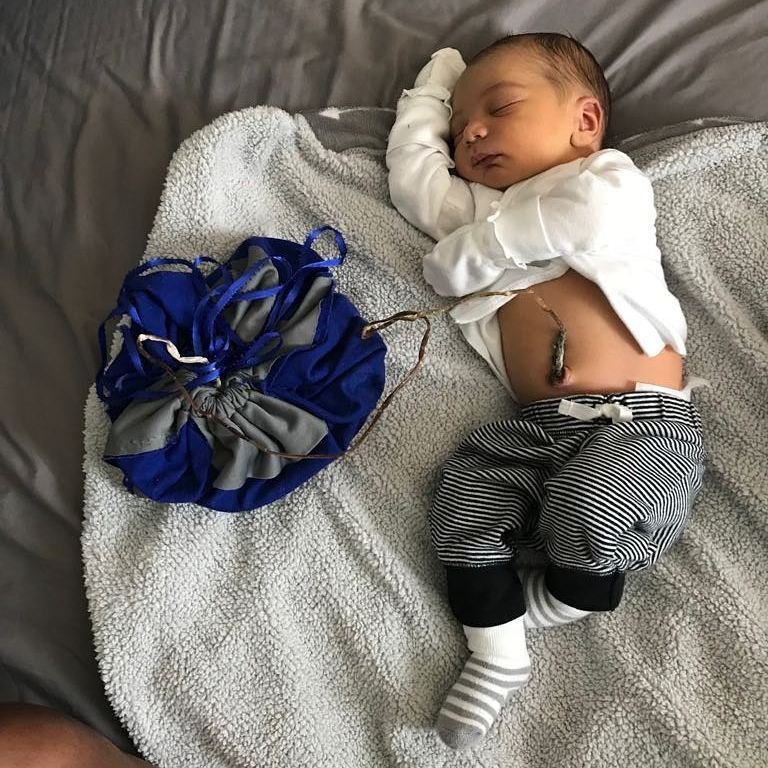“In the birthing classes I had taken, I was told to ’listen to your body,’ but in labor I was unable to do so; I felt confined to my hospital bed,” she tells CafeMom. “When I was ready to push, I informed my nurse, who insisted that I wasn’t. I felt uncomfortable and disregarded. But what I learned that day was that the hospital didn’t offer me anything that I couldn’t provide for myself in another setting.” More from CafeMom: A Doctor Just ‘Flipped’ This Pregnant Mom’s Bump & the Video Is Insane “I found that there were mothers who left the cord attached for several minutes or hours after birth to allow for the placenta to stop pulsating,” she says. “This would ensure that there was time for a full placental blood transfer to baby. Taking that idea a step further was the lotus birth. The idea really resonated with me because I was already set on embracing a very natural approach to this pregnancy, and cutting out any unnecessary medical interference was important to me.” This means that the family treats baby Ashton’s unsevered umbilical cord the same way new parents would treat a snipped one. The only difference is that his placenta is still around for the time being. “I believe that in the time that the cord is naturally detaching and the placenta is completing its job providing nutrients and blood to baby, [the] baby has time to establish a new bond and dependency on the father,” she says. More from CafeMom: This Is What It Looks Like to Be ‘Postpartum & Pregnant’ at the Same Time Fisher says that with Ashton attached to a short cord, wherever he goes the placenta must too as they wait for it to break. “Outside of the initial washing, drying, and curing of the placenta, there isn’t much maintenance required,” she says. “As for the part of the cord that’s attached to the naval, the same care is needed as would be if it were cut. Swaddling becomes more difficult as it dries because the cord begins to harden. Again, all of these nuisances are very trivial in the larger scheme of things.” When it comes to bathing, Fisher’s midwives recommended that the new parents wait 10 days before washing Ashton, and that’s been helpful in their goal of keeping the placenta as dry as possible. “All the other tasks associated with caring for a newborn baby, we tend to as usual,” she says. Once Ashton’s placenta finally does detach, the Fishers plan to bury it. Some members of her family definitely weren’t fond of the idea either, but she thinks most of the reluctance stemmed from the fact that this process is unfamiliar to many. “I didn’t find anyone’s objections valid enough to reconsider my decision,” she says. “Unorthodox is difficult for people to conceptualize. Whether the cord is cut or not, it detaches naturally. An old saying, ‘if it ain’t broke, don’t fix it’ comes to mind when I think of this. There was absolutely no flaw in the way that God designed any part of the process from conception, to delivery, to breastfeeding — all of it was beautifully orchestrated.” Despite reading opinions online about lotus births being “unsanitary” or “uncivilized,” Fisher hopes to empower other women to research for themselves. “Lotus births should be considered by new parents because of the health benefits a baby receives from a complete placental blood transfer,” she wrote. “It creates a more fluid transition for a newborn baby. It encourages bonding and may result in a more peaceful and serene infant because they avoid a traumatic experience at birth.”









title: “This Baby Rocks A Placenta Bag His Mom Doesn T Care If People Hate It” ShowToc: true date: “2024-10-06” author: “Shandra Ferreira”
“In the birthing classes I had taken, I was told to ’listen to your body,’ but in labor I was unable to do so; I felt confined to my hospital bed,” she tells CafeMom. “When I was ready to push, I informed my nurse, who insisted that I wasn’t. I felt uncomfortable and disregarded. But what I learned that day was that the hospital didn’t offer me anything that I couldn’t provide for myself in another setting.” More from CafeMom: A Doctor Just ‘Flipped’ This Pregnant Mom’s Bump & the Video Is Insane “I found that there were mothers who left the cord attached for several minutes or hours after birth to allow for the placenta to stop pulsating,” she says. “This would ensure that there was time for a full placental blood transfer to baby. Taking that idea a step further was the lotus birth. The idea really resonated with me because I was already set on embracing a very natural approach to this pregnancy, and cutting out any unnecessary medical interference was important to me.” This means that the family treats baby Ashton’s unsevered umbilical cord the same way new parents would treat a snipped one. The only difference is that his placenta is still around for the time being. “I believe that in the time that the cord is naturally detaching and the placenta is completing its job providing nutrients and blood to baby, [the] baby has time to establish a new bond and dependency on the father,” she says. More from CafeMom: This Is What It Looks Like to Be ‘Postpartum & Pregnant’ at the Same Time Fisher says that with Ashton attached to a short cord, wherever he goes the placenta must too as they wait for it to break. “Outside of the initial washing, drying, and curing of the placenta, there isn’t much maintenance required,” she says. “As for the part of the cord that’s attached to the naval, the same care is needed as would be if it were cut. Swaddling becomes more difficult as it dries because the cord begins to harden. Again, all of these nuisances are very trivial in the larger scheme of things.” When it comes to bathing, Fisher’s midwives recommended that the new parents wait 10 days before washing Ashton, and that’s been helpful in their goal of keeping the placenta as dry as possible. “All the other tasks associated with caring for a newborn baby, we tend to as usual,” she says. Once Ashton’s placenta finally does detach, the Fishers plan to bury it. Some members of her family definitely weren’t fond of the idea either, but she thinks most of the reluctance stemmed from the fact that this process is unfamiliar to many. “I didn’t find anyone’s objections valid enough to reconsider my decision,” she says. “Unorthodox is difficult for people to conceptualize. Whether the cord is cut or not, it detaches naturally. An old saying, ‘if it ain’t broke, don’t fix it’ comes to mind when I think of this. There was absolutely no flaw in the way that God designed any part of the process from conception, to delivery, to breastfeeding — all of it was beautifully orchestrated.” Despite reading opinions online about lotus births being “unsanitary” or “uncivilized,” Fisher hopes to empower other women to research for themselves. “Lotus births should be considered by new parents because of the health benefits a baby receives from a complete placental blood transfer,” she wrote. “It creates a more fluid transition for a newborn baby. It encourages bonding and may result in a more peaceful and serene infant because they avoid a traumatic experience at birth.”








